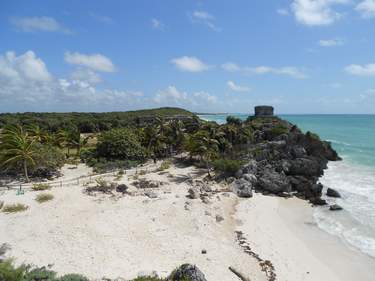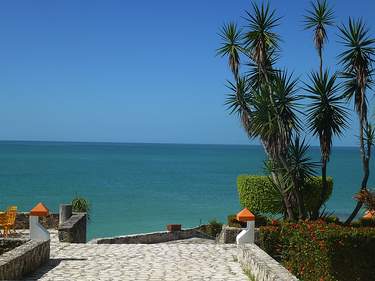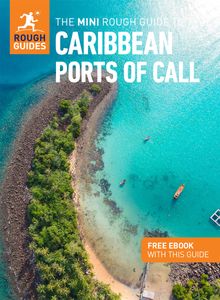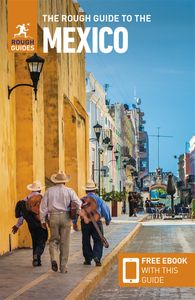Acapulco’s divers
Acapulco’s famed clavadistas (cliff divers) have been plunging some 35m from the heights of La Quebrada into a rocky channel since the early 1920s (organized officially since 1934), timing their leap to coincide with an incoming wave. Mistimed, there’s not enough water to stop them hitting the bottom, though the chief danger these experts seem to face is getting back out of the water without being dashed against the rocks. It could easily be corny, but it’s undeniably impressive, especially when floodlit at night. The dive times – 1pm, 7.30pm, 8.30pm, 9.30pm and 10.30pm – are rigidly adhered to. A typical display involves several exponents, most taking the lower (25m) platform with some diving simultaneously, and a final dive from the upper level after first asking for the Virgin’s intervention at the clifftop shrine. The final diver at the 10.30pm show leaps into the darkness (they turn off the floodlights) with two flaming torches. From the road you can see the spectacle for nothing (get there early), but you’ll get a much better view if you go down the steps from the Plazuela de Quebrada to a viewing platform (M$40) more or less opposite the divers. Get here early for a good position. Alternatively, you can sit in the lobby bar at El Mirador Acapulco hotel; watching from their overpriced La Perla restaurant is not worth it however. To get there, simply climb the Calzada La Quebrada from the town centre, about fifteen minutes’ walk from the zócalo.
Zona Dorada
The beaches around Acapulco Bay, despite their various names – Tamarindo, Hornos, Hornitos, El Morro, Condesa and Icacos – are in effect a single sweep of sand along what’s known as the Zona Dorada (roughly from where the old town ends at the big Mexican flag to the end of the bay).
From Caleta, a single seafront drive, the Costera Miguel Alemán – usually just “Costera” – stretches from the old town around the bay for 10km, linking almost everything of interest. For authentic Mexican seaside atmosphere it’s hard to beat the stretch of Costera between the Diana Glorieta statue (traffic circle) and the Fiesta Americana hotel, lined with restaurants, bars blaring music and the Paradise Bungee Drop. Stroll along the malecón to soak it all up. The beaches around here are also the place to come if you want to indulge in such frolics as being towed around the bay on the end of a parachute, water-skiing or sailing. Outfits offering all of these are dotted at regular intervals along the beach.
Playas Caleta and Caletilla
Playas Caleta and Caletilla have a quite different atmosphere from those in the main part of the bay. Both have almost legendary status in Mexico, but it’s the party families come for, not tranquillity. The beaches are actually very small, divided by a small rocky outcrop – they tend to be jam-packed at weekends, with a boisterous, carnival-like atmosphere and every centimetre of sand covered with beach umbrellas and towels. You wouldn’t come here for seclusion, but it’s loads of fun, the water is almost always calm and the beach is reasonably clean. You can sit at shaded tables on the sand, surrounded by Mexican matrons whose kids are paddling in the shallows, and be brought cheap drinks from the cafés behind. From here you can take a water taxi across to Isla La Roqueta, hang out at super-cool Boca Chica, or rent kayaks.
Staying safe in Acapulco
Since 2008 Acapulco has been adversely affected by what locals call “the media war on Mexico” (and you’ll see why if you pick up a copy of state newspaper Vértice). Yet the idea that Acapulco is overrun by gangsters is simply not true, and it’s extremely rare for tourists to be affected by the drug violence. Since 2011 the streets (and skies) have been patrolled by Federal police, making things especially safe. Like any big city, Acapulco suffers some petty crime and the usual rules apply: avoid empty backstreets at night, don’t flash expensive equipment and only take official taxis.






















